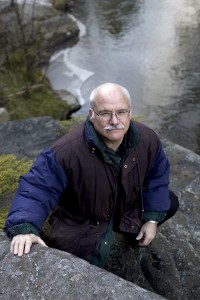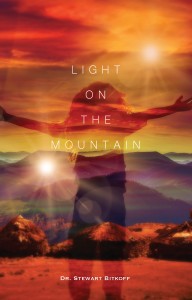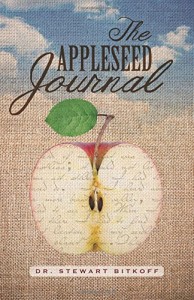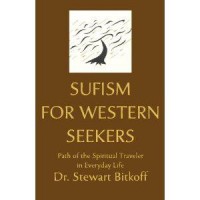Q: While on the path, what exactly is it you learn? How is this learning different than other learning?
From the very beginning, the traveler is taught that there is an underlying reality in all events. This underlying reality, through proper training and at certain times may be perceived. This perception is used to fulfill the higher potential or destiny of the situation.
The physical world or world of forms is supported by the world of spirit. The physical is an extension of this unseen world and exists so humanity can fulfill their higher destiny. Each traveler enters the world of forms for many reasons. Yet each reason is connected to the higher and the traveler ‘fumbles around in the dark’ unless he or she learns to connect with this higher reality. The ladder which has been extended is religion and spiritual learning. The path and teaching is the inner heart of this reality.
According to the mystic view, humanity suffers from ‘world sickness’ and the teaching exist to help provide the cure and help the traveler see reality. Most people live their entire lives attached to ideas, possessions and other people. These things to the exclusion of others fill their consciousness. While it is good to be concerned about the things of the world and involved in making things betters for others, there is a point where this investment leads you away from the higher, lasting reality. A balance must be maintained between the physical and spiritual.
In this endeavor, it is a matter of degree and attitude. With the proper guidance the traveler learns to participate in the world and withdraw attachment from the world, inwardly. While the traveler may go to work everyday, work hard and try to help others, a part must remain ‘sacred’ and attached to the Light.
It is the function of the Teacher to point out to the traveler this internal aspect: that is always connected to the Light, and whose function it is to point the way home and through the different worlds.
For most people, their world view is composed of preconceived ideas, beliefs and emotional reactions to situations. Part of the purpose of any culture or society is to formulate a set of guiding principles, which are taught to others who then form an affinity with these beliefs: guiding to some degree their daily life. Over time, these beliefs and principles, if the culture or society is to thrive, grow stronger and become operating principles. Rarely are these operating principles challenged by the people who follow them. Yet these beliefs are subject to deterioration and ‘hardening;’ failing to be updated as necessary. Also some of these beliefs may have been instituted as a way to control others or limit the potential of specific groups. When this is done it is rarely stated that this is a driving principle.
Now this grouping of ideas, beliefs and emotional reactions come together to formulate our world view or the way we face the world. In spiritual terminology, it is called the commanding self. The way we operate daily. This set of beliefs reluctantly accepts criticism or a different view than its own. Psychology has termed part of the commanding self, ‘intellect’ which tries to reason things out based upon facts that have been taught, observed and accepted based upon collective societal experience.
From the mystical perspective, it is precisely this consciousness which needs to be pushed aside or suspended momentarily to let other ideas and impacts in. Most often it is the commanding self that is the door and stands in the way of seeing what is actually in front of you, and prevents the higher impulse from being perceived.
Consider a culture that is based upon commerce and amassing as much personal material wealth as possible. Decisions in this culture will be based upon guiding principles that increase individual and collective wealth. Ideas that target different areas of society: like social service will be looked upon secondarily, and not part of this original, guiding principle. In our society of commercial wealth, what individuals think about and how they examine possibilities will be influenced by this commercial ideal. When individuals do not use this principle to examine events or potentials they may feel ‘guilty’ or be confused.
Gradually the traveler learns to examine assumptions, in order to see exactly what is present, not what is believed to be present. By temporarily suspending the commanding self, the traveler learns to see the reality of the situation and what is beyond the situation.
In order to do this, one has to understand when your ideas and beliefs have been engineered (indoctrinated) or when they are inherent to your own needs and the needs of others. Keep in mind, there is nothing wrong with having a commercial view and looking at events in this way. This view becomes a hindrance only when it prevents other things from operating, or you do not find it adequately explains how you look at the world and feel. There must be something more.
Within the framework of religions, we find many systems that state we are the only true path. Yet other paths exist. In this situation, is it a matter of indoctrination or belief; as opposed to the reality of not seeing the true potential of the situation?
* *
Let us play a game and suppose you could be anything you desire. Pick someone or something and pretend you are that person or thing for a moment. Concentrate real hard and imagine yourself being whatever you like.
Now consider how far from the truth this really was. For an instant, a part of you was someone or something else. For that moment you consciously changed a part of your reality.
Now take this technique, of changing your consciousness and use it for a Higher Purpose.
* *
In the journey there comes a point when words and desires are no longer important. That is, there is no emotional attachment to them. All that is important is the Source. Desire for everything else has been removed.
It is at this point the traveler arrives and the Source is within sight. However for most this is not a static condition. The traveler fluctuates between this state and others. The degree of fluctuation is in proportion to the traveler’s position on the path and the work he/she is required to do.
* *
Feeling spiritual is not the same thing as being spiritual. Most people confuse emotional states with spiritual ones; remaining satisfied with fool’s gold.
* *
The canvas is the world: you are the artist.
Pick-up the brush and create your own life.
_________
Check-out my two new books: Sufism for Western Seekers: Path of the Spiritual Traveler in Everyday Life and The Ferryman’s Dream. Both books are available through Amazon.com or local bookstore.








{ 0 comments… add one now }